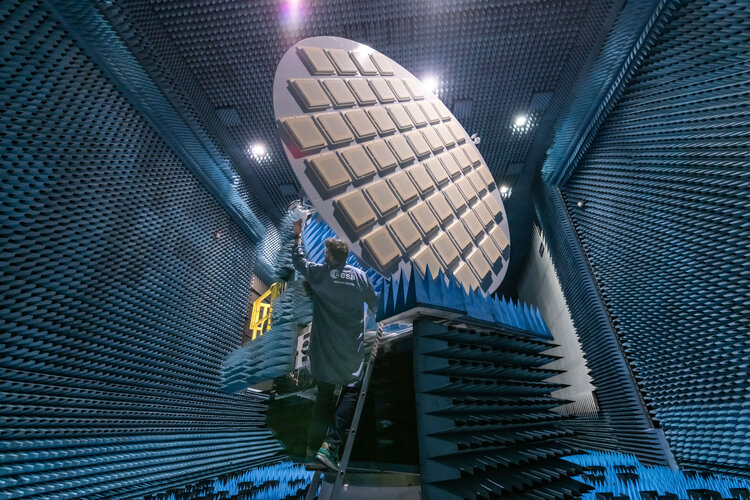The largest antenna ever tested in ESA’s Hertz radio frequency test chamber is this 5-m diameter transponder antenna, which will operate down on the ground to help calibrate the Biomass mission, which will chart all the forests on Earth.
“This is a particularly challenging test campaign both in terms of the size of the antenna and the very low P-band frequency that Biomass will be using, which allows it to pierce through forest canopies to acquire individual trees,” explains ESA antenna engineer Luis Rolo, overseeing the test campaign.
“Usually when we test a large satellite here, its antenna is significantly smaller, typically between 0.5 and 2 metres across. But this entire structure is a radiating antenna in its own right, its sides coming near to the chamber walls.
“What this means is that the testing process highlight some aspects of the chamber we’ve never seen before, even after many years of testing. But we’ve come up with a measurement method involving multiple acquisitions from different spots within the chamber, combined carefully to subtract such environmental effects, yielding very accurate results.”
Part of ESA’s technical heart in the Netherlands, the metal-walled ‘Hybrid European Radio Frequency and Antenna Test Zone’ chamber is shut off from all external influences. Its internal walls are studded with radio-absorbing ‘anechoic’ foam pyramids, allowing radio-frequency testing without any distorting reflections.
Its name starts with ‘Hybrid’ because the chamber can assess radio signals from antennas both in localised ‘near-field’ terms or else on a ‘far-field’ basis, as if the signal has crossed thousands of kilometres of space.
Due to be launched next year, Biomass will deploy a massive 12-m diameter reflector to harness P-band radar signals in order to perform a five-year census of all Earth's trees.
Based in Australia, this transponder will be integrated onto a mobile positioning system inside a protective radome, allowing it to track the Biomass satellite moving across the sky. The transponder antenna will reflect radar signals from Biomass back to it, to help confirm the mission is operating optimally. The transponder was developed and built by Italian company IDS.



 Image:
Radio eye on tree-counting Biomass
Image:
Radio eye on tree-counting Biomass